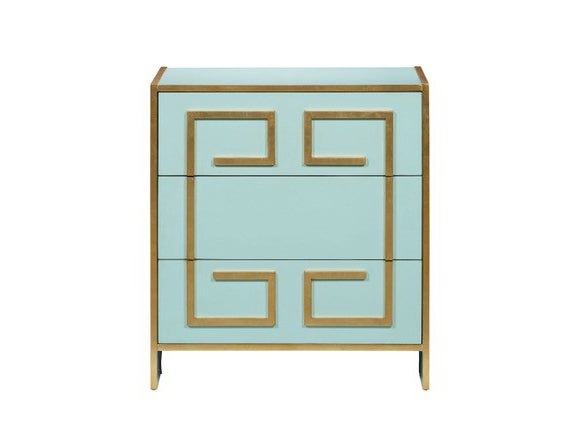The ancient Greek key pattern is even older than it sounds
Thousands of years old and still in style

On a recent trip to London, I spent a morning wandering the antiquity galleries of the British Museum and was reminded – as I always am – that so many patterns and designs we use today are as old as time.
Perhaps there is no motif this is truer of than the Greek key, which is even older than its name suggests. Variations of the design are found on Egyptian tombs, ancient Chinese buildings and sculptures, and Mayan carvings. Still, we most closely associate the linear geometric pattern with the Greeks and their mosaic floors, red and black pots, and masterfully carved marble friezes.
Greek key, also referred to as meander, is in its most basic form a linear pattern. The design is made up of a long, continuous line that repeatedly folds back on itself, mimicking the ancient Maeander River of Asia Minor with its many twists and turns. Homer mentions the river in The Iliad, and it is believed that the meander motif symbolises infinity or the eternal flow of things. (In fact, the word “meander” is derived from the 250 mile-long snaking Maeander, known today as the Menderes, which flows through south-western Turkey.)
What is most astonishing about the meander motif is that it is found in the architecture, sculpture and decorative arts of many early civilisations – civilisations that could not possibly have known or seen one another’s artefacts. It seems that those cultures, independent of one another, created their own version of the motif.
But it’s the Greeks who used the motif with abandon, hence the reason we most commonly refer to it as the Greek key. The Romans then copied it, and by the 18th century, all of Europe had adapted it into their design vocabulary. For our own history, the motif has been celebrated in many design periods, including Empire and Hollywood Regency.
Greek key strikes the right balance of decorative and simple, ancient and modern, masculine and feminine – all at the same time. For this reason, it has always been one of my go-to decorative elements: I own sheets with Greek key embroidery, upholstery edged in Greek key trim, a pair of Gustavian chairs with carved Greek key details, and a slew of plates and platters rimmed in the Greek key pattern. (I search eBay monthly for “Greek key transferware”.) But as with any design element, too much is too much. So I try limiting my use of it to one item per room. I use it as I do any other geometric pattern; it works particularly well when juxtaposed with a more organic or flowery design.

One of the greatest benefits of Greek key is that it adds architectural interest to a room where there isn’t any. Edge simple curtains with a Greek key trim, and it’s as though you’ve magically added architectural mouldings to your windows. Put down a large-scale Greek key rug, and you instantly have a strong, geometric shape that anchors the room and optically makes it look bigger.
Using the pattern on walls can have the same effect. San Francisco-based Briana Nix used the Phillip Jeffries wallpaper It’s Greek to Me in a powder room she designed, giving the room serious architectural interest and graphic punch. She says she felt the black and white Greek key was more unexpected than its “overplayed” cousin, chevron.
You can find items with just about any scale of Greek key. The key can be blown up to a single large bracket so that the design takes on a super graphic quality, or the motif can be miniaturised and densely repeated so that the keys are less noticeable.

When it comes to colour, there are no rules. You can find Greek key items, from trim to tile, in every colour. And one thing to note: the Greeks themselves used colour freely. All those white temples were actually heavily decorated with colour and gilding. So take it from the Greeks – their colour and their key.
Elizabeth Mayhew is a style expert on the ‘Today’ show, former magazine editor and author of ‘Flip! for Decorating’
© Washington Post
Join our commenting forum
Join thought-provoking conversations, follow other Independent readers and see their replies
Comments
Bookmark popover
Removed from bookmarks